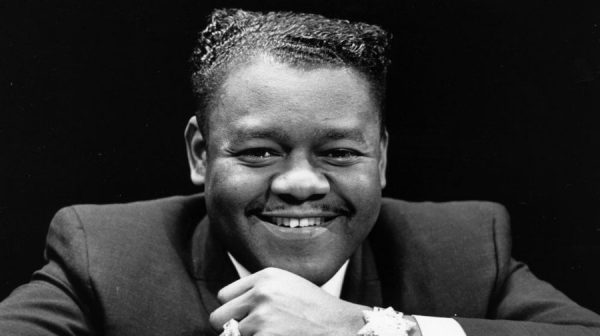Rock ‘n’ roll lost one of it’s most loved and well-known pioneers yesterday, the 24th of October 2017. Fats Domino, the New Orleans rhythm-and-blues singer whose two-fisted boogie-woogie piano and nonchalant vocals, heard on dozens of hits, made him one of the biggest stars of the early rock ’n’ roll era, died, on Tuesday at his home in Harvey, Louisiana, near New Orleans. He was 89.
Goans absolutely love music and rock ‘n’ roll is definitely one music genre that can get anyone’s feet moving. And am pretty sure anyone that’s into music in whatever form, singer or player would appreciate the legend that was Fats Domino. So this one’s for all those rock ‘n’ roll fans in our fair state.
Who was Fats Domino?
One of rock ‘n’ roll’s greatest pioneers, Antoine Dominique Jr. “Fats” Domino Jr. was born on February 26, 1928, in New Orleans, Louisiana.
The youngest of eight children in a musical family, he spoke Creole French before learning English. When Domino was 7, his brother-in-law taught him to play the piano and introduced him to the vibrant New Orleans music scene. By the age of 10, he was already performing as a singer and pianist.
An American pianist and singer-songwriter of Louisiana Creole descent, singer and pianist Fats Domino channeled his roots in the city’s thriving music scene to become a pioneering rock ‘n’ roll star. He made a splash with his first release, “The Fat Man” (1949), and later earned widespread fame with tracks like “Ain’t That a Shame” (1955) and “Blueberry Hill” (1956). Although his string of hits largely dried up by the early 1960s, Domino continued to record and tour, and he was among the charter members of the Rock and Roll Hall of Fame.
Through the years
In 1949, Fats Domino met collaborator Dave Bartholomew and signed to Imperial Records, where he would stay until 1963. Domino’s first release was “The Fat Man” (1949), based on his nickname, a song co-written with Bartholomew. It became the first rock ‘n’ roll record to sell 1 million copies, peaking at No. 2 on the R&B charts. The two continued to churn out R&B hits and Top 100 records for years, with Domino’s distinctive style of piano playing, accompanied by simple saxophone riffs, drum afterbeats, and his mellow baritone voice, making him stand out in the sea of 1950s R&B singers.
Fats Domino found mainstream success in 1955 with his song “Ain’t It a Shame,” covered by Pat Boone as “Ain’t That a Shame”; Boone’s version hit No. 1 on the pop charts, while Domino’s original reached No. 10. The hit record increased Domino’s visibility and record sales, and he soon re-recorded it under the revised name, which remains the popular title/version today.
He continued to churn out hit after hit such as “My Blue Heaven”, his cover of Glenn Miller’s “Blueberry Hill,” which hit No. 2 on the pop charts, his top charting record ever. He cemented this popularity with appearances in two 1956 films, Shake, Rattle & Rock and The Girl Can’t Help It, and his hit “The Big Beat” was featured on Dick Clark’s famous television show, “American Bandstand” in 1957.
So much has been written about this rock n roll legend, it’s difficult to capture all of it on paper.
Here’s an article from the NY Times that you could read to learn more about Fats Domino.
Death of one of rock ‘n’ roll’s brightest stars
Domino described his songwriting process as taking inspiration from everyday events: “Something that happened to someone, that’s how I write all my songs,” he explained. “I used to listen to people talk every day, things would happen in real life. I used to go around different places, hear people talk. Sometimes I wasn’t expecting to hear nothin’, and my mind was very much on my music. Next thing I’d hear, I would either write it down or remember it good.” Domino believed the success of his music came from the rhythm: “You got to keep a good beat. The rhythm we play is from Dixieland — New Orleans.”
The rock ‘n’ roll legend died of natural causes on October 24, 2017, at the age of 89, according to the Associated Press. He will be remembered as one of Rock music’s earliest and most enduring stars, who helped break down color barriers in the music industry.
Source – Biography.com


